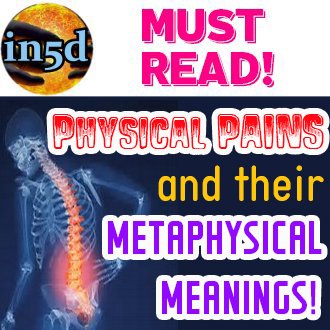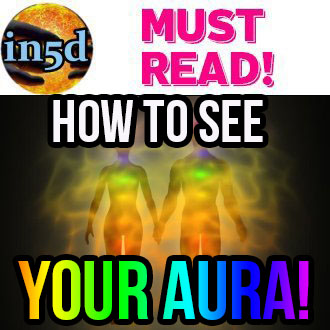Hold Up, Did We Just Crack Time Travel?

by Michael Howard,
A now-famous team of astrophysicists shocked the world Thursday after recording the gravitational waves of two black holes slamming into each other 1.3 billion light-years away.
Donate to In5D
With over 6,000+ free articles and 1,200+ free videos, any donation would be greatly appreciated!
Much love for your kind donation,
Gregg
This detection supports Einstein’s general theory of relativity in a way that revolutionizes scientific understanding of how space and time behave in extreme environments, and astrophysics will never be the same.
That includes mankind’s pursuit of time travel.
Kip Thorne of the acclaimed Laser Interferometer Gravitational-wave Observatory (LIGO) researchers deflected such assertions about his team’s finding at the press release by saying, “I don’t think [our detection of gravitational waves] is going to bring us any closer to being able to do time travel. ”
But two things are certain: Humility is essential in the path to a Nobel Prize, and other renowned astrophysicists are giving the LIGO team more credit than they give themselves.
David Spergel is a theoretical physicist and chair of Princeton University’s astronomy and astrophysics department and he’s one such admirer. Spergel concedes there is a long way to go before man comprehends the true plausibility of time travel, but he believes general relativity will be essential to that discovery, if the stars align for it.
“There are still a lot of ifs there, starting with the existence of negative mass particles and wormholes being stable,” Professor Spergel tells The Daily Beast. “But general relativity’s equations—which gave us black holes, and we see very strong evidence for them with LIGO—are telling us that that would permit time travel.”
Whether or not they want to claim it, the LIGO researchers just made great strides toward understanding time travel.
A Brief Picture Of General Relativity
Einstein’s general relativity explains gravity and how things move through space, and leading time-travel theories in the scientific community must account for it.
Einstein explains gravity as the product of mass manipulating the fabric of space-time. This fabric is known as “space-time” because the two concepts are inseparably woven together throughout the universe, much in the same way that a mile is roughly six minutes away from a good runner.
Like a bowling ball sitting amid a trampoline, black holes are massive objects that warp the fabric of space-time. Anything (say, a golf ball) that approaches a black hole (the bowling ball) gets faster the closer it gets because that is where the fabric of space-time (the trampoline) is most warped.
This warping is caused by any and everything with mass, but is especially intense around the greatest objects in the universe: black holes. And that’s where the magic happens.
“Time travel might be possible in situations that involve these very strong gravitational fields,” another Princeton astrophysicist, Edwin Turner, tells The Daily Beast. “You would only get time travel in the strong-field gravity.”
LIGO’s Proof Of Strong-Field Gravity
There’s never been anything like LIGO’s direct detection of strong-field gravity, which comes with a statistical significance of 5.1 sigma, meaning there’s only a one in 6 million chance that the finding is an error.
It’s proof.
It’s proof that gravitational waves exist, that black holes exist, and that two of the fat monsters—at 29 and 36 times the mass of our sun—smashed into each other 1.3 billion years ago in a collision so violently it sent out ripples across the universe like a brick thrown into a pool. Most importantly, it’s proof that Einstein’s most radical prediction, which mathematically allows for time travel, was correct in a remarkably precise way.
Though this detection is the first of such, well, gravity, general relativity and even gravitational waves have been tested several times since Einstein’s 1915 formulation of general relativity.
Sir Arthur Eddington launched Einstein to international stardom after his 1919 observations of a solar eclipse supported general relativity over classical Newtonian physics, and there have been myriad similar affirmations since. Most notably, Joseph Taylor and Russell Hulse won a Nobel Prize in 1993 for discovering the effects of gravitational waves generated from a binary pulsar’s spin.
However, what LIGO’s detection “did much better than anything that came before is test general relativity in what’s called the ‘strong-field limit,’ meaning the involvement of things dominated by speed-of-light effects,” Turner says. “These two black holes were approaching the speed of light.”
Einstein says time stops for objects traveling at the speed of light and slows for anything nearing that speed.
Where Strong-Field Gravity Meets Time Travel
The greater the warping of space-time, the closer point A on one side of a black hole gets to point Z on the other side. Theoretically, gravity can be so intense around a supermassive black hole that points A and Z can actually touch, allowing for points B through Y to be bypassed altogether.
For time travel to be possible, “Trajectories through space-time have to be bent enough that they can close back on themselves—strong gravitational fields strongly distort the fabric of space and time,” Turner explains. “If the field is strong enough and complicated enough, there can exist paths through that distorted space-time that intersect themselves at different times—meaning you could travel along a path that connects points in the future to points in the past.“
What’s that look like? Drop a heavy enough dumbbell in a leg of pantyhose, and you’ll see the hose stretch so much that it contracts near the opening until the sides touch. If you have to spin the dumbbell to make it happen, so be it. Black holes are the most violent vortexes in the universe after all.
The ETA Of Time Travel
Innovations in astrophysics and our understanding of the universe are chugging along like never before, but don’t hold your breath for George Carlin riding in on a magical phone booth anytime soon.
Spergel predicts at least another 50 years of discovery are necessary before the implications LIGO’s findings can lead to any tangible advancement in how humans travel through space, but that’s just the pace at which astronomy evolves. To say it functions on a geological time scale would quite literally be an understatement.
Whenever time travel does get proven or disproven, the discovery will have the LIGO researchers’ proof of Einstein’s 100-year-old prediction to thank for its path to logic.
“General relativity has some really interesting mathematically allowed features, which includes things like warp space-time that potentially allows very fast space travel—travel even faster than what looks locally like the speed of light,” says Spergel. “Whether it’s possible to take advantage of those solutions is not clear yet, but this observation tells us that we should use general relativity.
Image: Pixabay
See EXCLUSIVE In5D videos and ad free articles on Patreon for a minimal donation! https://www.patreon.com/in5d
Follow In5D on Patreon, Telegram, Twitter, Bitchute, TikTok, Instagram, Facebook, YouTube, Gab, and Truth Social @greggprescott

















